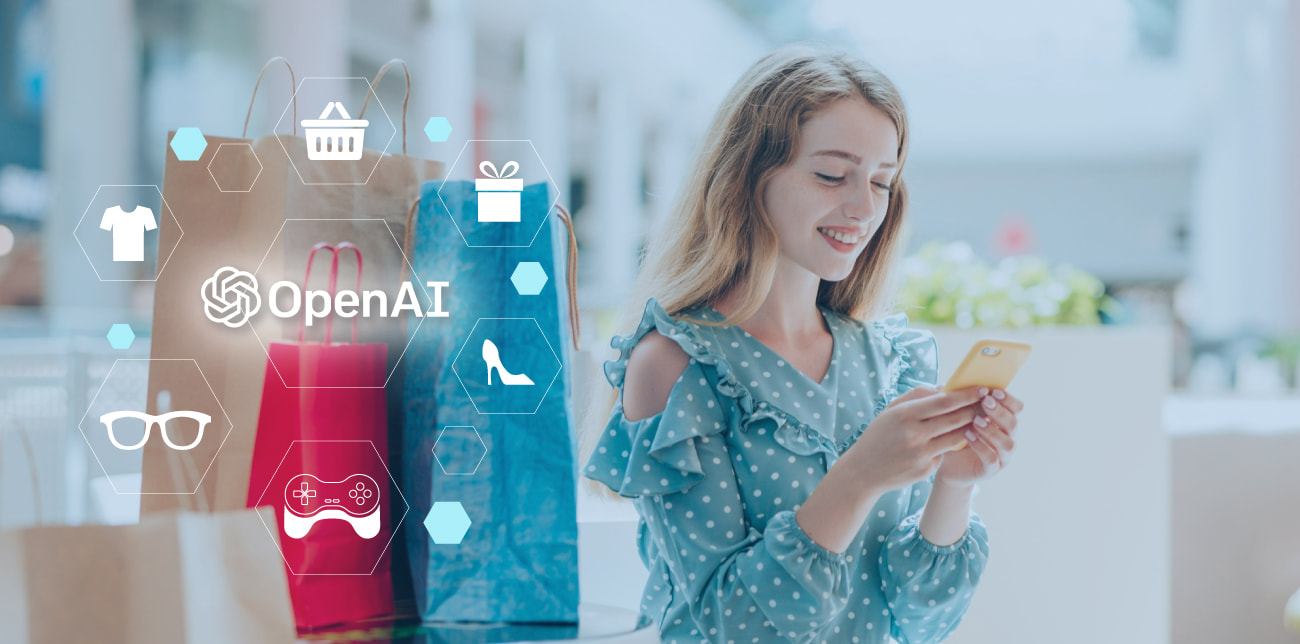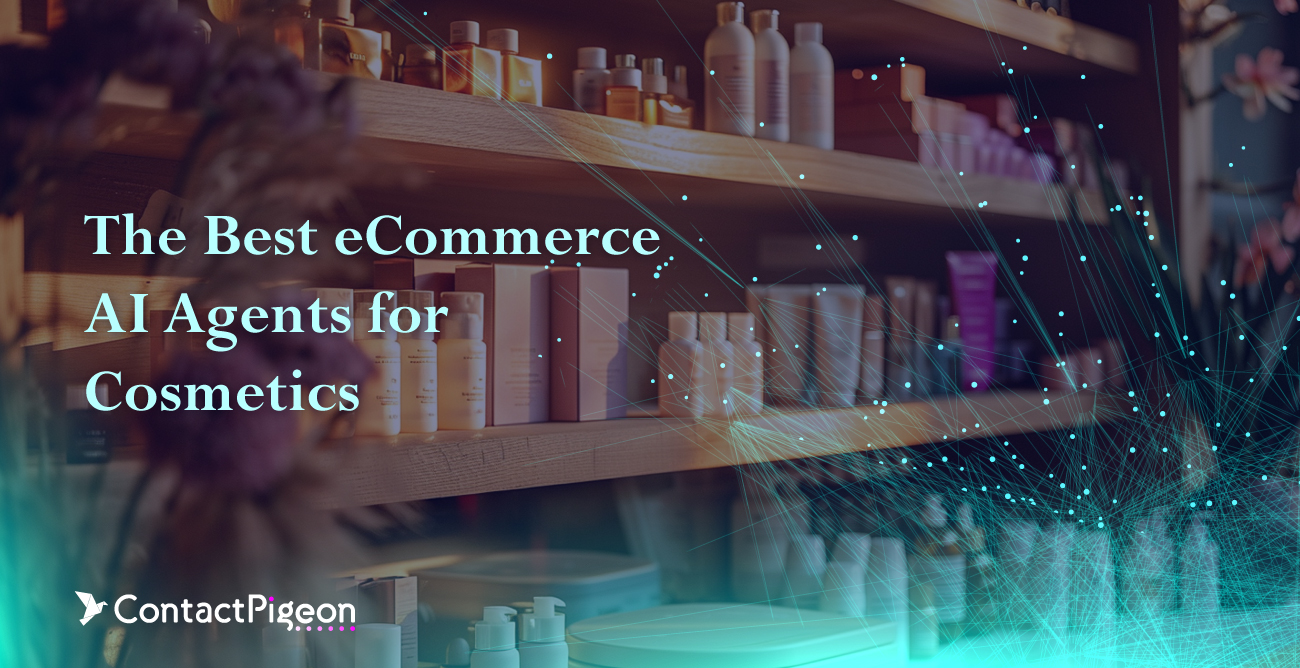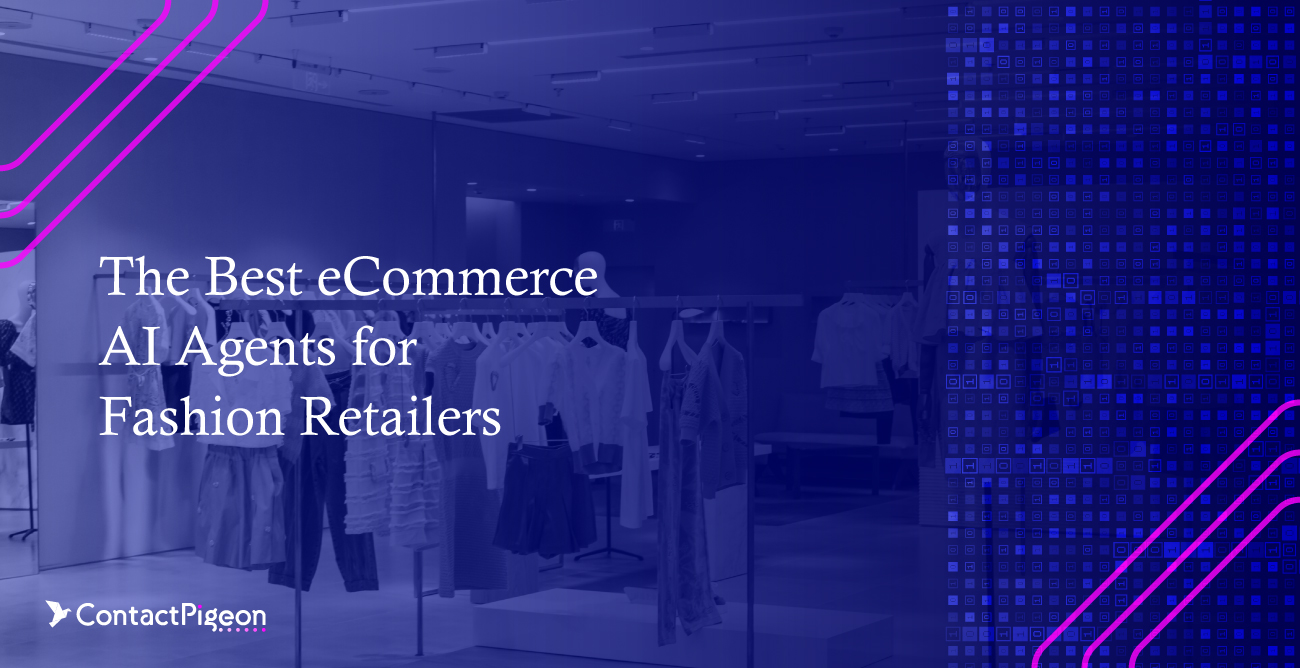One of the most promising technologies for growing business efficiencies is AI (artificial intelligence) which has the potential to revolutionize the retail industry. ChatGPT, an AI language tool that has gained 100+ million users in its first week of launch, is poised to play a critical role in this transformation by helping retail eCommerce businesses enhance customer service, personalize their marketing efforts, optimize their supply chain, and more. This article will explore the different ways of adopting ChatGPT for retail eCommerce businesses and how it can be integrated into their existing workflows to achieve maximum benefits.
Table of Contents
- > What is ChatGPT?
- > Use cases of ChatGPT
- > An example of ChatGPT in action
- > Other AI language generators
- > ChatGPT in numbers
- > 7 ways to use ChatGPT in the retail industry
- > Retail brands are already experimenting with ChatGPT and AI
- > Limitations of ChatGPT
- > Key Takeaways
- > Unlocking the potential of ChatGPT for retail business
What is ChatGPT?
In a nutshell, ChatGPT is a natural language processing AI chatbot that has a wide range of applications, from writing an essay on a given topic prompt to generating a business plan. The fact that it’s known as a natural language AI means that ChatGPT can “understand” or process human language inputs in a conversational nature.
ChatGPT is developed by OpenAI and built upon the GPT model (GPT stands for Generative Pretrained Transformer). It was pre-trained on massive sources, including textbooks, websites, published papers, and various articles, which the chatbot uses to model its language when responding to human interactions.
At the time of this writing, ChatGPT is transitioning to the GPT-4 model, which has been enhanced from previous generations to accept image inputs in addition to text and analyze the content of the images.
Use cases of ChatGPT
ChatGPT can be used in a variety of applications that revolves around language processing and generation. Some use cases include:
- Capability 1: Customer Service
ChatGPT can be used in customer service to handle common inquiries and assist customers with their questions and concerns. - Capability 2: Content Creation
The AI tool can generate content for blogs, social media, and other marketing needs. - Capability 3: Language Translation
ChatGPT can be used to translate text from one language to another. - Capability 4: Chatbots
When integrated with chat functionalities, ChatGPT can be used to power chatbots that can directly interact with customers and provide assistance. - Capability 5: Education
ChatGPT can be used in education to provide personalized learning experiences, answer questions, and provide feedback to students. - Capability 6: Writing Codes
It can help programmers by generating code in multiple languages with any prompt on the functional needs (e.g., write a function that returns the number of weekdays between two date inputs).
An example of ChatGPT in action
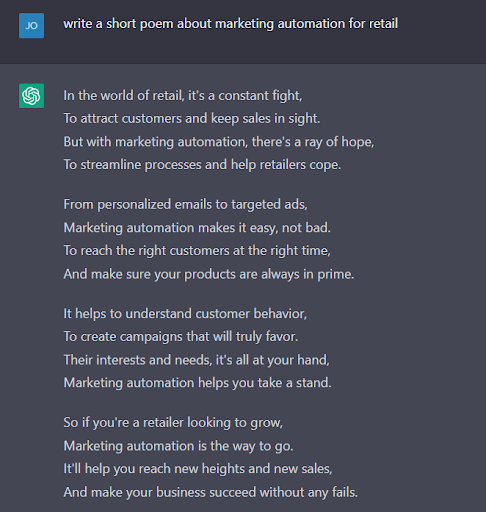
We wanted to put ChatGPT’s creative content writing to the test and asked it to compose a poem on marketing automation for retail. Here is its “masterpiece.”
In the world of retail, it’s a constant fight,
To attract customers and keep sales in sight.
But with marketing automation, there’s a ray of hope,
To streamline processes and help retailers cope.
From personalized emails to targeted ads,
Marketing automation makes it easy, not bad.
To reach the right customers at the right time,
And make sure your products are always in prime.
It helps to understand customer behavior,
To create campaigns that will truly favor.
Their interests and needs, it’s all in your hand,
Marketing automation helps you take a stand.
So if you’re a retailer looking to grow,
Marketing automation is the way to go.
It’ll help you reach new heights and new sales,
And make your business succeed without any fails.
Other AI language generators
There are several AI language generators on the market. Each of these models has its strength and weaknesses, along with its unique scope of application.
BERT (Bidirectional Encoder Representations from Transformers)

Developed by Google, it is a pre-trained language model that can be used for tasks such as question answering and language translation.
XL Net
Developed by Carnegie Mellon University and Google, it is a language model that can generate text with better coherence and accuracy than traditional language models.
T5 (Text-to-Text Transfer Transformer)
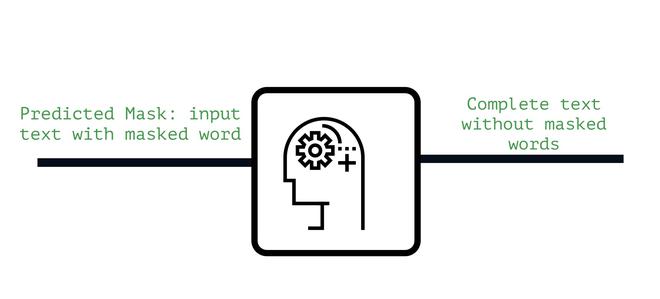
Developed by Google, it is a language model that can perform a wide range of language tasks such as summarization, translation, and question-answering.
CTRL (Conditional Transformer Language Model)
Developed by Salesforce, CTRL is a language model that can generate coherent text in response to specific prompts.
RoBERTa (Robustly Optimized BERT approach)
Developed by Facebook, it is a language model trained on a large amount of data and can perform a wide range of language tasks.
ChatGPT in numbers
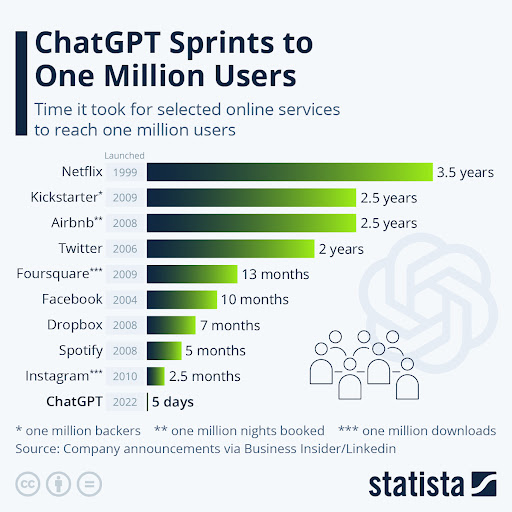
Since its original release to the public in November 2022, ChatGPT had taken the world by storm, setting the record for the software with the fastest user adoption, when it reached 100 million active users just two months after launch. Here are some key stats about ChatGPT.
- 1 million users gained in just the first week of launch, marking it the fastest growing user-base in history for consumer application.
- 616 million estimated monthly visitors the ChatGPT website currently receives.
- $200 million projected revenue for 2023 projected by OpenAI and $1 billion by 2024.
- 175 billion parameters are used by GPT-3, making it one of the largest language models ever created.
- 300 billion words and 570 gigabytes of text data are used to train the initial dataset for ChatGPT.

7 ways to use ChatGPT in the retail industry

1. ChatGPT for eCommerce retailers: Virtual customer service
Retailers can adopt ChatGPT for virtual customer service by creating a chatbot that can interact with customers in a natural language and provide quick and accurate responses to their queries. Chatbots can be used both online and in-store in the form of kiosks.
Virtual customer service can provide businesses with several benefits, including cost savings, increased efficiency, and improved customer satisfaction. All of the above are particularly helpful during holidays or sales seasons as customer volume spikes. The smart chatbot can help businesses to scale up quickly by handling a large volume of customer queries and providing consistent and accurate responses to their customers, enhancing their overall customer experience.
2. ChatGPT for eCommerce retailers: Personalized email communications and product recommendations
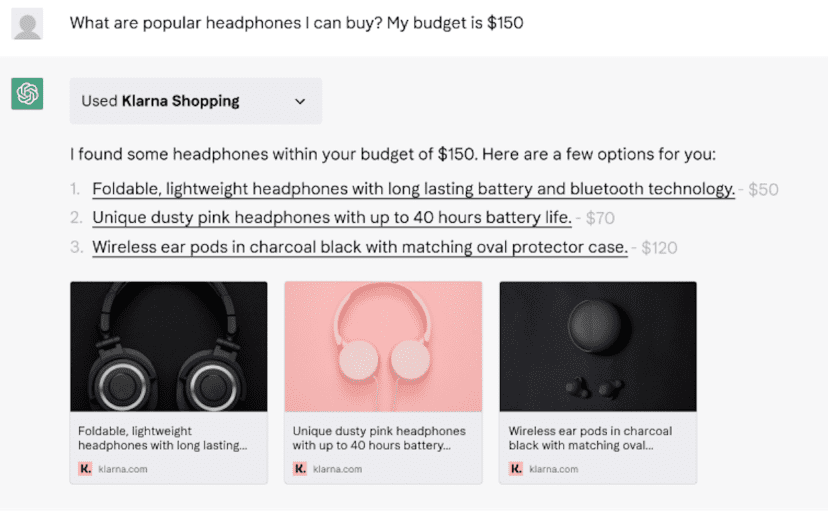
ChatGPT can analyze customer data to provide personalized recommendations and promotions. It can also help with product discovery by suggesting similar or complementary products based on a customer’s browsing history and purchase behavior.
By integrating the GPT model with a marketing automation platform such as ContactPigeon, retailers can make full use of the platform’s unified customer data, campaign automation, and personalization features to generate ultra-personalized communication such as product recommendations and re-engagement campaigns.
3. ChatGPT for eCommerce retailers: Building a strong brand on social media channels

A core strength of ChatGPT is its ability to write text content tailored to a specific audience. eCommerce retailers can use ChatGPT to generate content for social channels, such as engaging captions and posts.
Moreover, AI technology can help the social media marketing team to monitor follower trends on social and compose responses to follower messages and tags.
4. ChatGPT for eCommerce retailers: Proofreading and translating customer communications
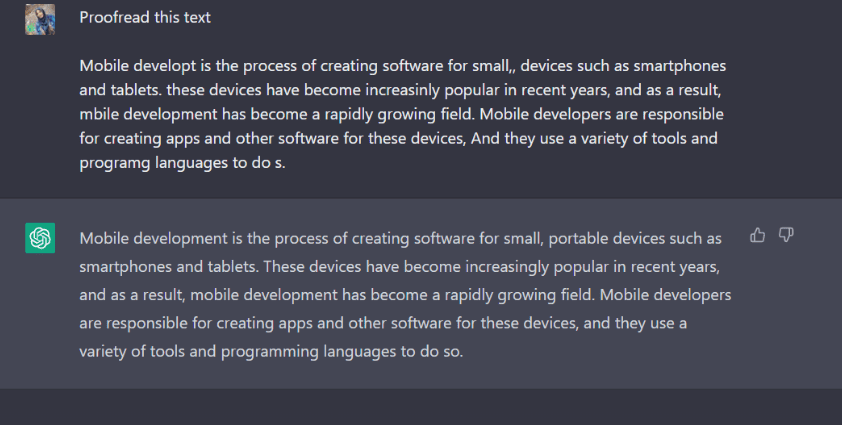
The AI tool possesses the capability to proofread text, rectify any grammatical errors, and improve the structure of the writing. Furthermore, it is also capable of supporting the translation of text from and into multiple languages, such as English, Spanish, French, Chinese, and more.
5. ChatGPT for eCommerce retailers: Fraud detection
ChatGPT can analyze customer behavior and transactions to identify potential fraud or suspicious activity. This use can help eCommerce businesses prevent fraudulent transactions and protect their customers’ personal and financial information.
6. ChatGPT for eCommerce retailers: Writing product descriptions

eCommerce retailers can use generative AI to create product descriptions optimized for search engines and appealing to the brand’s customers. This use can help eCommerce retailers improve their SEO and increase the traffic to their online shops.
7. ChatGPT for eCommerce retailers: Voice assistance
Lastly, ChatGPT can be integrated with voice assistants like Amazon Alexa and Google Assistant to provide voice-enabled shopping experiences for customers. This use can help businesses reach new customers and improve their accessibility. Retailers may also use the technology with virtual avatars to create a more engaging customer experience, as seen in the example of Carrefour described later in this article.
Retail brands are already experimenting with ChatGPT and AI
The enormous popularity of OpenAI’s ChatGPT prompted many businesses, including retail eCommerce brands, to accelerate the adoption of ChatGPT or similar AI tools for business growth. Many eCommerce players are finding new and innovative ways of bringing generative AI to marketing, sales, and customer engagement. Here are some examples of how various retail brands seek to adopt generative AI.
Carrefour: AI-driven FAQ
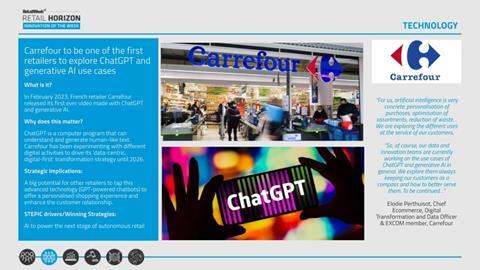
In February 2023, the French grocery chain Carrefour generated a video made with ChatGPT answering FAQs. The short video clip, a human avatar, with input from ChatGPT, answers a common question from customers about how to eat better and cheaper via its website.
JD: “125” roadmap to AI application
Also in February, JD.com, one of China’s largest online retailers, announced it would launch a tool similar to ChatGPT. The retailer plans to release ChatJD tailored to the retail and finance sector for use in the following five applications: Content generation, man-machine dialogue, understanding user intent, information extraction, and sentiment analysis.
Limitations of ChatGPT
Despite the enormous potential and capabilities ChatGPT exhibits, there are known limitations and drawbacks when it comes to fully relying on the tool for content generation and service support. Hence, it’s crucial to exercise caution when adopting AI chat directly. Some of the key drawbacks and limitations are the following.
Limitation 1: Accuracy of answers
ChatGPT’s responses are as good as its text inputs. Since the model has not yet undergone sufficient training, it may provide wrong answers to many inquiries. Particularly when it comes to general facts and statistics, it is not very easy to verify the sources used. Consequently, it’s worthwhile to double-check any of the information it provides for accuracy from authoritative sources before using the chatbot’s answer outright.
Limitation 2: Limited knowledge domain and bias

The model’s training data is limited to information available on the internet as of September 2021, so it may not be knowledgeable about recent events or emerging trends. At the same time, the training data is biased toward certain stereotypes, cultures, languages, and perspectives, which would result in biased responses or reinforce existing biases.
Limitation 3: Lack of contextual understanding and common sense
After all, ChatGPT is not human. Hence, it does not have access to the same knowledge and experiences that humans do. For instance, it may still have trouble interpreting the meaning behind certain phrases or questions – such as sarcasm, colloquialisms, humor, and irony. Similarly, the chatbot is not capable of understanding or expressing emotions in the same way that humans do. As such, it can often lead to misunderstanding or inadequate response in emotional situations that are often encountered in customer service settings.
Limitation 4: Inability to make qualitative judgments
The chatbot is fully capable of summarizing, paraphrasing, editing, and translating pieces of text. It is, however, still not yet able to make qualitative judgments or generate insights from the data provided. Consequently, its content is often statements of fact without particularly deep or insightful new ideas.
Key Takeaways
Key takeaway 1: AI is the future for growth
ChatGPT, or similar generative AI tools, can be a powerful ally to enhance business growth, customer satisfaction, and operational efficiency for any retail brand. It can support businesses in improving the quality as well as the quantity of content generation and customer service when adopted properly.
Key takeaway 2: Don’t hesitate to experiment
Many retail brands are already experimenting with such technology when it comes to customer service and information management – this includes behemoths such as Amazon to the supermarket chain Carrefour.
Key takeaway 3: ChatGPT is a multipurpose tool
Chatbots and their best practices can be used within the customer service domains to handle incoming inquiries, brand education, and product recommendations. It’s valuable in its scalability and can be a great addition to customer representatives in handling basic FAQs.
Key takeaway 4: ChatGPT will revolutionize marketing
Aside from customer service, ChatGPT, and similar tools are exceptional in polishing text, translations, and generating content for brand marketing. Because of its limitations, it’s still too soon to trust ChatGPT completely, but this doesn’t negate the changes it will bring to the marketing landscape.
Key takeaway 5: Emotional intelligence is still a human trait
The quality of the output is as good as the training inputs. As such, there are key limitations that retailer brands need to be aware of when it comes to adoption, particularly around the accuracy and timeliness of the responses generated. At this point, it’s still not a full replacement for human customer reps, particularly in situations that require emotional intelligence, which ChatGPT still lacks.
Unlocking the potential of ChatGPT for retail business
AI language technology such as ChatGPT offers a wide range of benefits for retailers looking to enhance their business operations, customer support, and marketing efforts. The use cases described in this article only captured a small subset of potential ways eCommerce retailers can adopt this tool. There remain enormous untapped potentials for business growth when such technology is effectively combined with marketing automation and customer engagement solutions.
By leveraging its capabilities in natural language processing and machine learning, eCommerce retailers can automate many of their customer-facing interactions, including personalized product recommendations, email marketing campaigns, and social media promotions. ChatGPT represents a powerful tool that retailers can leverage to stay competitive, meet the changing needs of their customers, and lead the way for a digitally evolved industry.

Let’s Help You Scale Up
Spending time on Linkedin? Follow us and get notified of our thought-leadership content:

